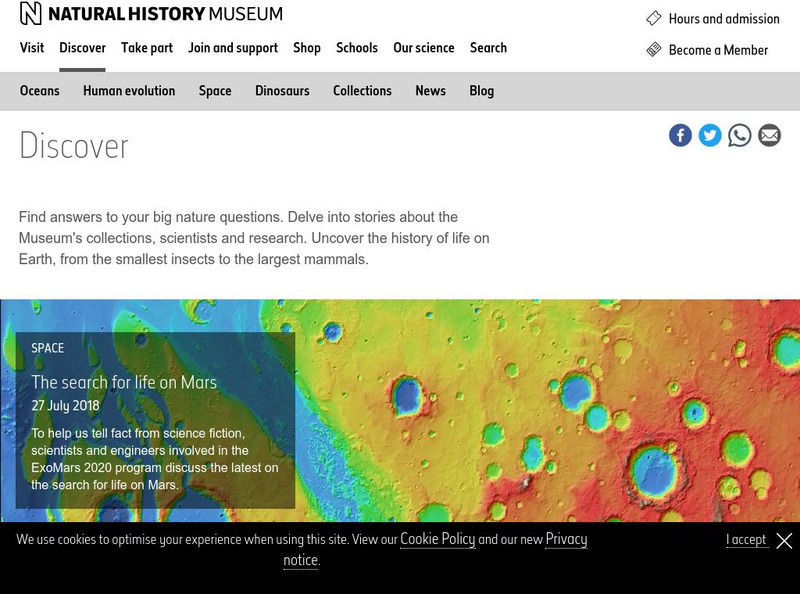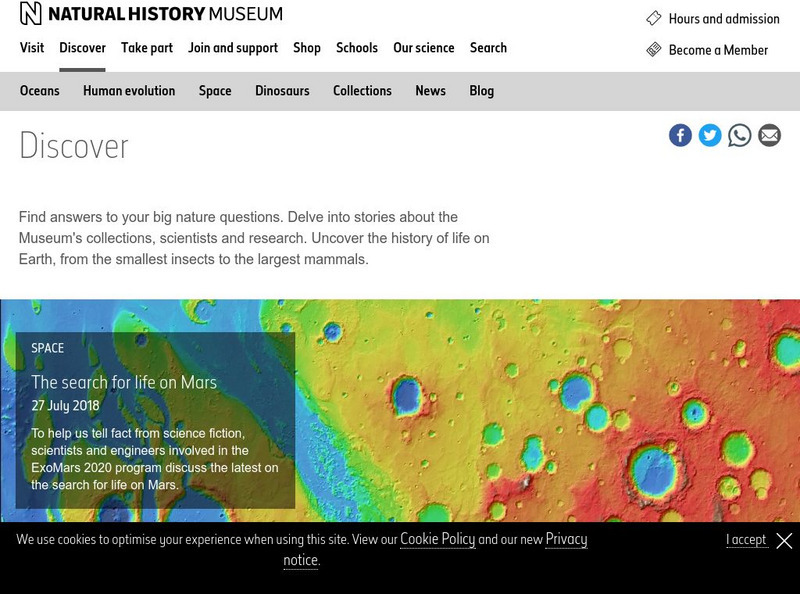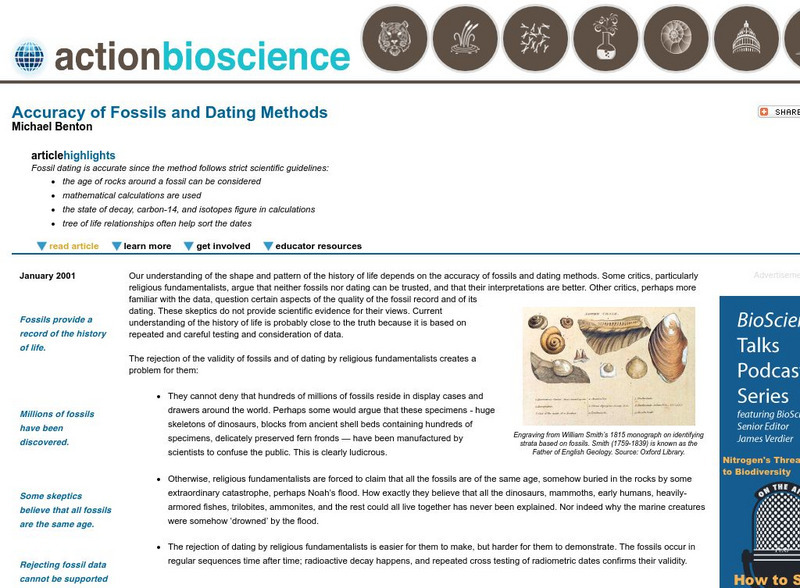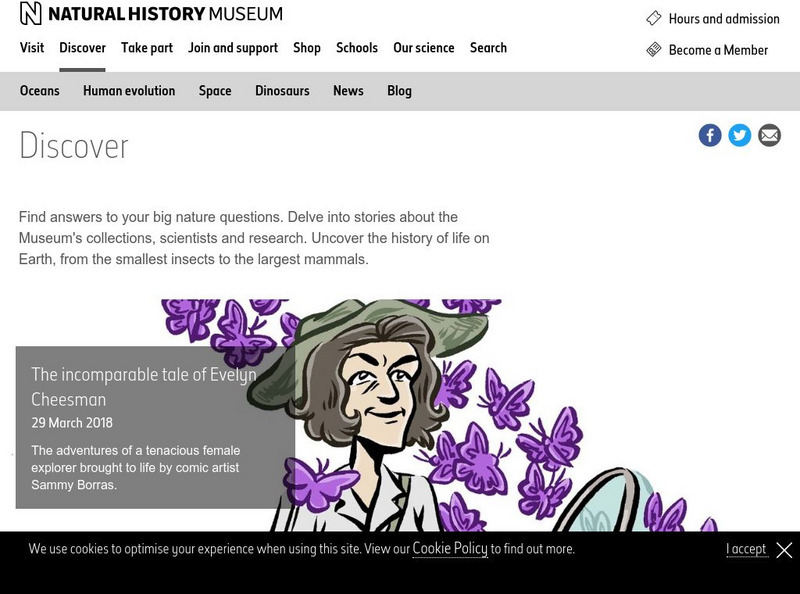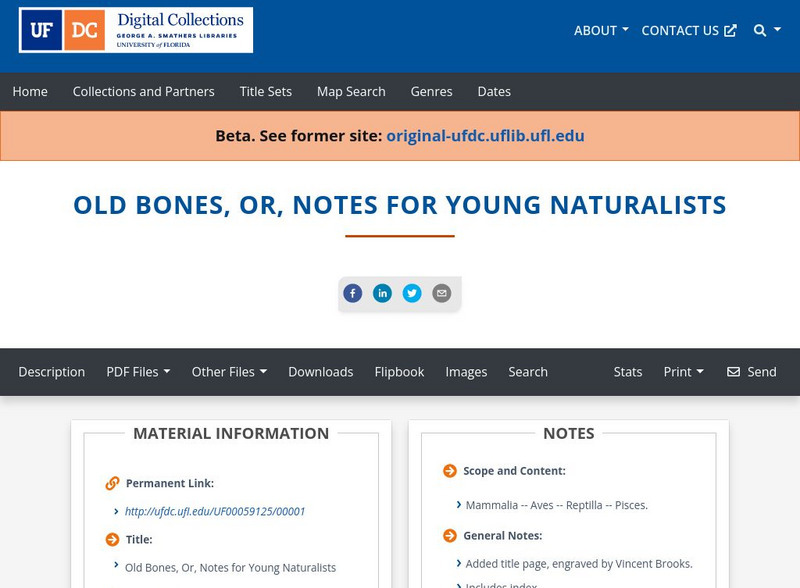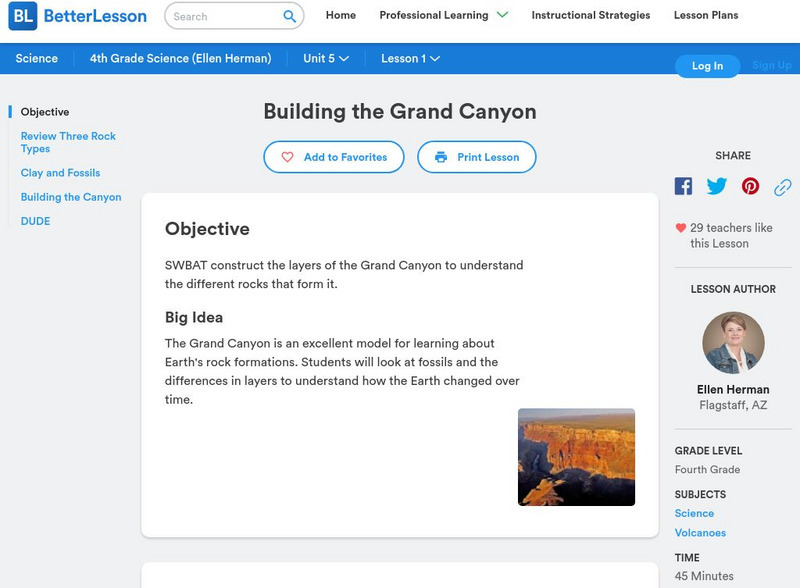Natural History Museum
Natural History Museum: Fossil Formation
As part of a larger online exhibit on fossils and what fossils are, this site specifically deals with the formation of fossils. A six-step, detailed chart is provided with specific information explaining each step.
American Institute of Biological Sciences
Action Bioscience: Rethinking Fossil Fuels
Find out how fossil fuels impact the environment and cause climate change.
Natural History Museum
Natural History Museum: Types of Fossils
This particular site is part of a larger online exhibit from the Natural History Museum covering various aspects of fossils and fossil research. Here, seven types of fossils are listed and each type is given a picture representation.
Science Struck
Science Struck: The Meaning of Index Fossils Explained
Explains the importance of index fossils for the dating and chronology of events in the fossil and geological records. Discusses uses and examples of index fossils in the Cenozoic, Mesozoic, and Paleozoic Eras.
Science Education Resource Center at Carleton College
Serc: Identifying Fossils: Exploring the Mississippi River Bluffs
Students investigate fossils found in the Decorah Shale found in the Mississippi River bluffs. They will determine the name and description of the most common fossils. They will also determine how old the fossils are and what the...
CK-12 Foundation
Ck 12: Fourth Grade Science: Earth Science: Fossils
[Free Registration/Login may be required to access all resource tools.] Discusses what fossils are, how they form, and what scientists can learn from fossils.
Georgia State University
Georgia State University: Hyper Physics: Fossil Distribution
One of the first lines of evidence suggesting the existence of plate tectonics was the discovery of very similar fossils in rock masses separated by vast distances and by ocean expanses. It suggested that those land areas had in the past...
Science Struck
Science Struck: Types of Fossils
Describes four different kinds of fossils and how they form.
Ducksters
Ducksters: Earth Science for Kids: Fossils
A site for students to explore the Earth science subject of fossils including the ways fossils form, types such as trace and body, fun facts, collecting, and where they are found.
American Institute of Biological Sciences
Action Bioscience: Accuracy of Fossils and Dating Methods
Discover the accuracy of dating methods and fossils because of the scientific approach used.
American Institute of Biological Sciences
Action Bioscience: Fossils and the Origin of Whales
Through fossils scientists have been able to study the evolution of whales. Read this article to take a closer look at the details.
Children's Museum
The Children's Museum of Indianapolis: Mold and Cast
Students will define the term fossil, identify the difference between a mold and a cast fossil, and understand how scientists use models to learn about the physical structure of something in the natural world.
Natural History Museum
Natural History Museum: Shark Teeth Fossils
The information provided at this site is part of a larger online exhibit centered on fossils and fossil research. The shark tooth is listed as one type of fossil and here it is pictured and described.
Other
New Mexico Museum of Natural History and Science: Coelophysis
The Coelophysis is New Mexico's official state fossil. It lived in the late Triassic Period and has only been found in New Mexico. Popular questions about this dinosaur are answered here. In addition, there are numerous documents about...
PBS
Pbs Learning Media: Riddle of the Bones
At the online companion Web site of "Evolution," the seven-episode series on PBS, piece together clues to how one of our early ancestors looked as you examine images from four significant fossil finds of Australopithecus afarensis.
Canadian Museum of Nature
Canadian Museum of Nature: Dinosaurs: Archaeopteryx Lithographica
Is it a feathered dinosaur, or the ancestor of birds? Find out about the Archaeopteryx lithographica whose fossil remains show feathers similar to that of a bird, and whose skeleton resembles that of a dinosaur.
University of Florida
Baldwin Library: Old Bones, Or, Notes for Young Naturalists by W. S. Symonds
This is an online photocopy of the original text of the children's book Old Bones, or, Notes for Young Naturalists by W. S. Symonds (1861), includes information and illustrations about vertebrates and their fossils.
Annenberg Foundation
Annenberg Learner: Earth and Space Science: Every Rock Tells a Story
Explore the different types of rocks on our Earth as you watch a one-hour video, accompanied by learning goals, details on sedimentary rocks, fossils, and supercontinents, and more.
Georgia Department of Education
Ga Virtual Learning: Historical Geology
In this interactive tutorial you will explore how geologists use clues in rocks to determine the order in which rocks formed. Learn how principles of radioactivity are used to assign actual ages to rocks. Students will explore fossils...
Better Lesson
Better Lesson: Building the Grand Canyon
The Grand Canyon is an excellent model for learning about Earth's rock formations. Young scholars will look at fossils and the differences in layers to understand how the Earth changed over time. Resources included are detailed...
Museums Victoria
Museum Victoria: Pseudofossils: Concretions and Dendrites
Pseudofossils are materials that are sometimes mistaken for fossils. They include concretions and dendrites, described here.
Curated OER
The Virtual Fossil Museum: Fossils Across Geological Time and Evolution
Picture of the fossil Leanchoilia superlata from the Phylum Arthropoda recovered from Burgess Shale.
Other
Carbon 14 Dating
Seven pages all about Carbon 14 Dating. Information on half-life, Carbon 14 used to date specimens and artifacts, limitations, charts and graphs. Michael E. Brown Ph.D. contests that the limitations of Carbon 14 dating support the theory...


